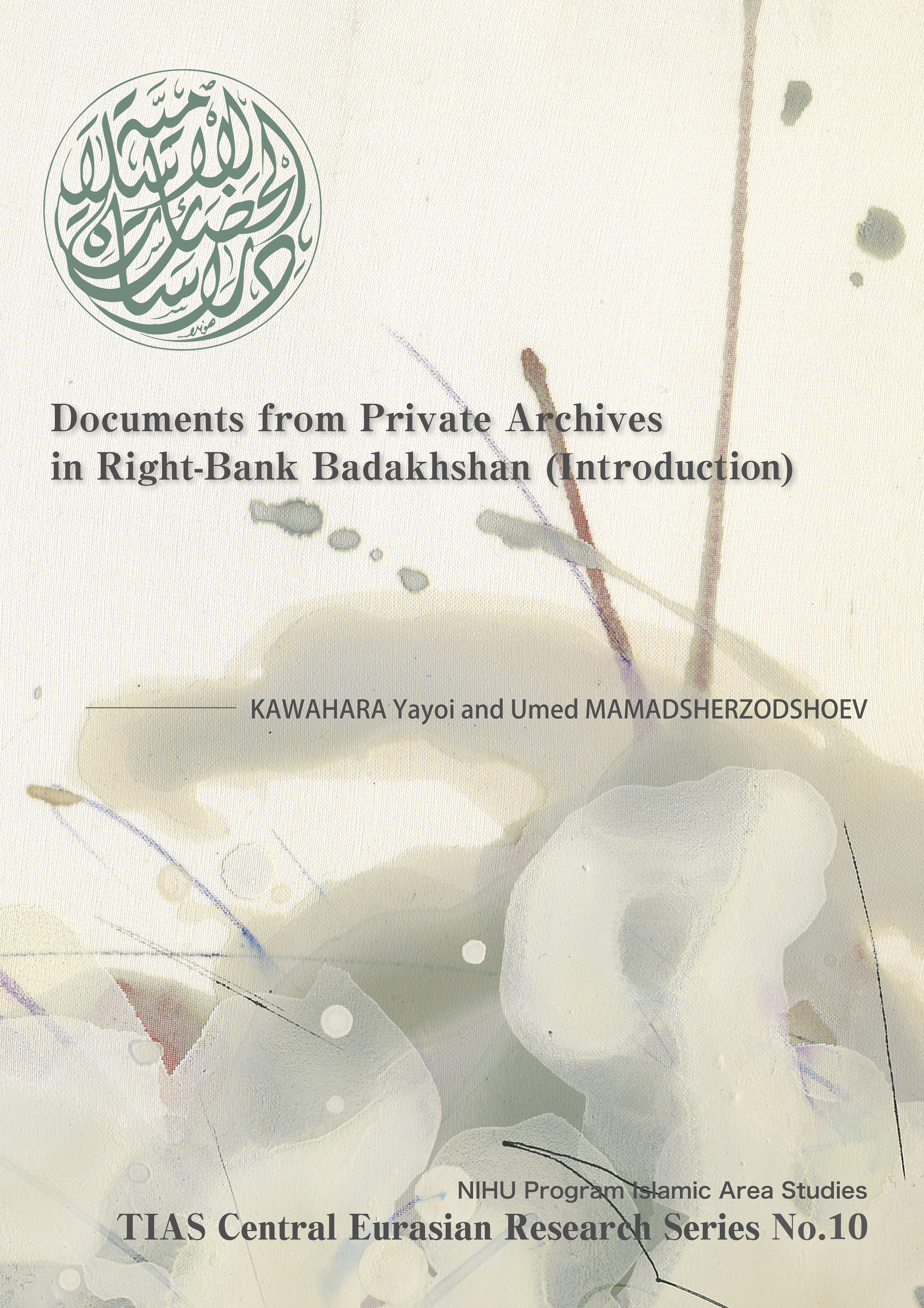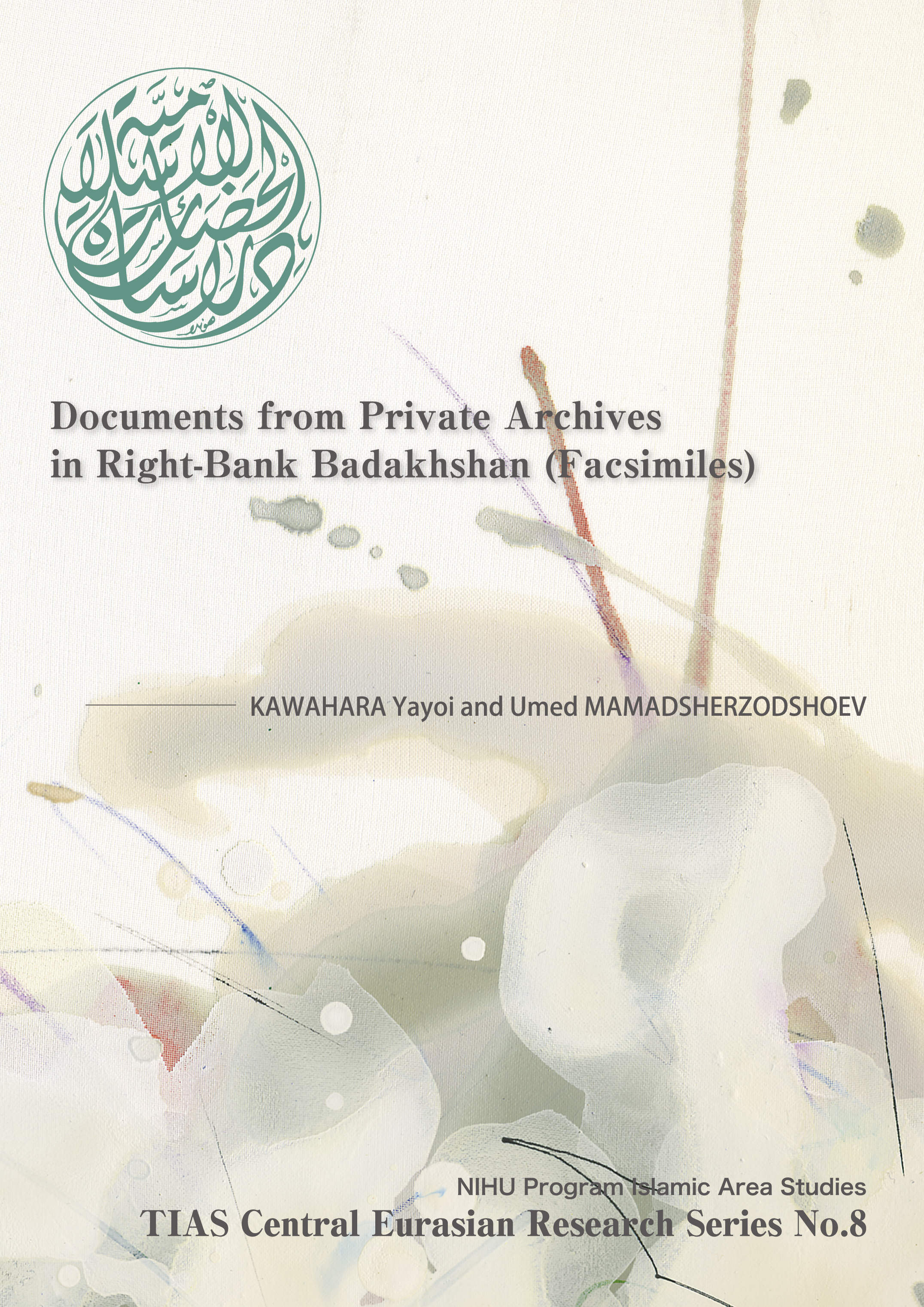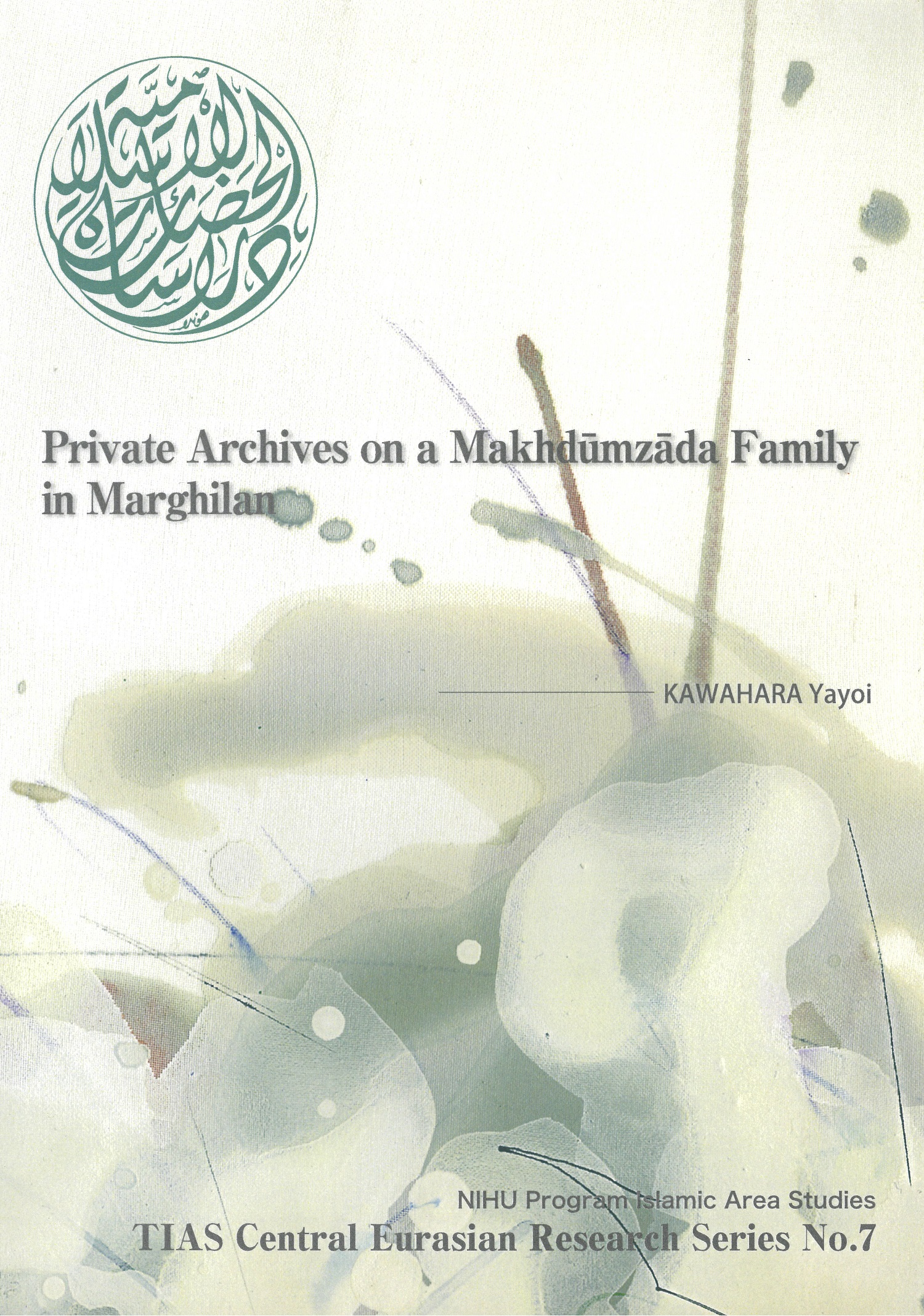
Title
TIAS Central Eurasian Research Series; no. 10 Documents from private archives in right-bank Badakhshan Introduction
Size
95 pages
Language
English
Released
2015
ISBN
9784904039892
Published by
TIAS: Department of Islamic Area Studies Center for Evolving Humanities, Graduate School of Humanities and Sociology, The University of Tokyo
Book Info
See Book Availability at Library
Documents from private archives in right-bank Badakhshan (Introduction)
Japanese Page
This publication presents a bibliographical introduction and explanatory notes to Documents from private archives in right-bank Badakhshan (Facsimiles), which has been already presented on this site, providing explanations for 152 facsimiles of historical documents from four districts located on the right bank of the Panj river, a headstream of the Amu Darya, that forms the border between Tajikistan and Afghanistan, in the southwestern part of the Gorno-Badakhshan Autonomous Province of the Republic of Tajikistan. The collected materials comprise various documents of the mid-18th century to the beginning of the 20th century related to local Pamiri peoples who are the Ismaili Muslims.
Although, in addition to the great diversity in content of these documents, the lack of previous studies made it particularly difficult even to classify the materials, we sorted them, judging from the content and form, by the following categories: I. Documents related to Āghā Khāns (the supreme leader of the the Qasim Shahi Ismailis) (54 items), II. Documents related to mukhīs (heads of congregations) (8 items), III. Genealogies (3 items), IV. Other documents related to religious matters (5 items), V. Orders (3 items), VI. Deeds(52 items), VII. Letters (17 items). Then, together with basic information such as the language, year of creation, size, and presence of seal impressions, we also provided a concise summary of their content.
The most valuable historical sources in this collection are I. Documents related to Āghā Khāns. They include orders from Aga Khans, zaqat (tax) receipts, letters from Aga Khan I to the Qajarid ruler, Fath ‘Ali Shah, etc. The oldest among these documents, receipts issued by Aga Khan I to the followers in Badakhshan in 1849, has a particularly important meaning. It clearly attests to the fact that the Ismailis in Badakhshan turned to obey Aga Khan just after Aga Khan I fled from Iran, where he previously lived, and moved his base to Bombay in India in 1845. Also, an analysis of the zaqat receipts by the year of their issuance reveals that while at first a joint delegation for delivery of zaqat that represented the whole of Badakhshan used to be sent to India, as times went by, separate delegations from smaller territorial units began to be dispatched, and this practice continued even during the Soviet period. The orders demonstrate that successive Aga Khans executed their strong leadership not only in appointment of local leaders in Badakhshan, but also in various other issues regardless of their importance in the local society, e.g., by settling disputes among followers.
A Leaflet intended for the followers published during World War II that we classified into IV. Other documents related to religious matters are of great interest, too. In this leaflet, seven prominent Ismaili leaders jointly address the believers stressing the terrible damage and devastation caused by Hitler’s invasion of the Soviet Union and calling upon them to fight together with Tajiks, Uzbeks, Turkmen, Tatars and other Muslims, along with Russians and Ukrainians, for their Soviet Motherland in the battle against Germany. This material allows readers to take a glimpse of the peculiar local historical context, revealing that the Soviet government, which, initially, based on its official atheist ideology, rejected Islamic beliefs, eventually came to seek allegiance of the Ismailis toward the Soviet Union through their leaders.
Even these few examples demonstrate the high value the new historical materials introduced in this volume have for understanding the history of this region. We sincerely hope that this publication will be actively and fruitfully utilized not only by researchers of Central Asian history, but also in research on various other topics such as Ismaili history and beliefs, relations between India and Badakhshan, etc.
*This material was published as Vol. 10 of TIAS Central Eurasian Research Series, by NIHU Program Islamic Area Studies / TIAS the Islamic Area Studies Center at the University of Tokyo (FY2011 to FY2015). As of March 2023, full text is available for download from the Publications list page at http://www.l.u-tokyo.ac.jp/tokyo-ias/nihu/publications/index.htm.
(Written by KAWAHARA Yayoi, Associate Professor, The University of Tokyo Library System / 2023)
Table of Contents
Introduction
I. Historical Background
II. Documents from Private Archives
Documents from Private Archives in Right-Bank Badakhshan
I. Documents related to Āghā Khāns
A. Decrees
B. Receipts
C. Others
II. Documents related to mukhīs
A. Orders
B. Tables on collected zakāt
C. Others
III. Genealogies
IV. Other documents related to religious matters
V. Orders
VI. Deeds
VII. Letters
Simplified map of present-day Right-Bank Badakhshan



 Find a book
Find a book


 eBook
eBook
